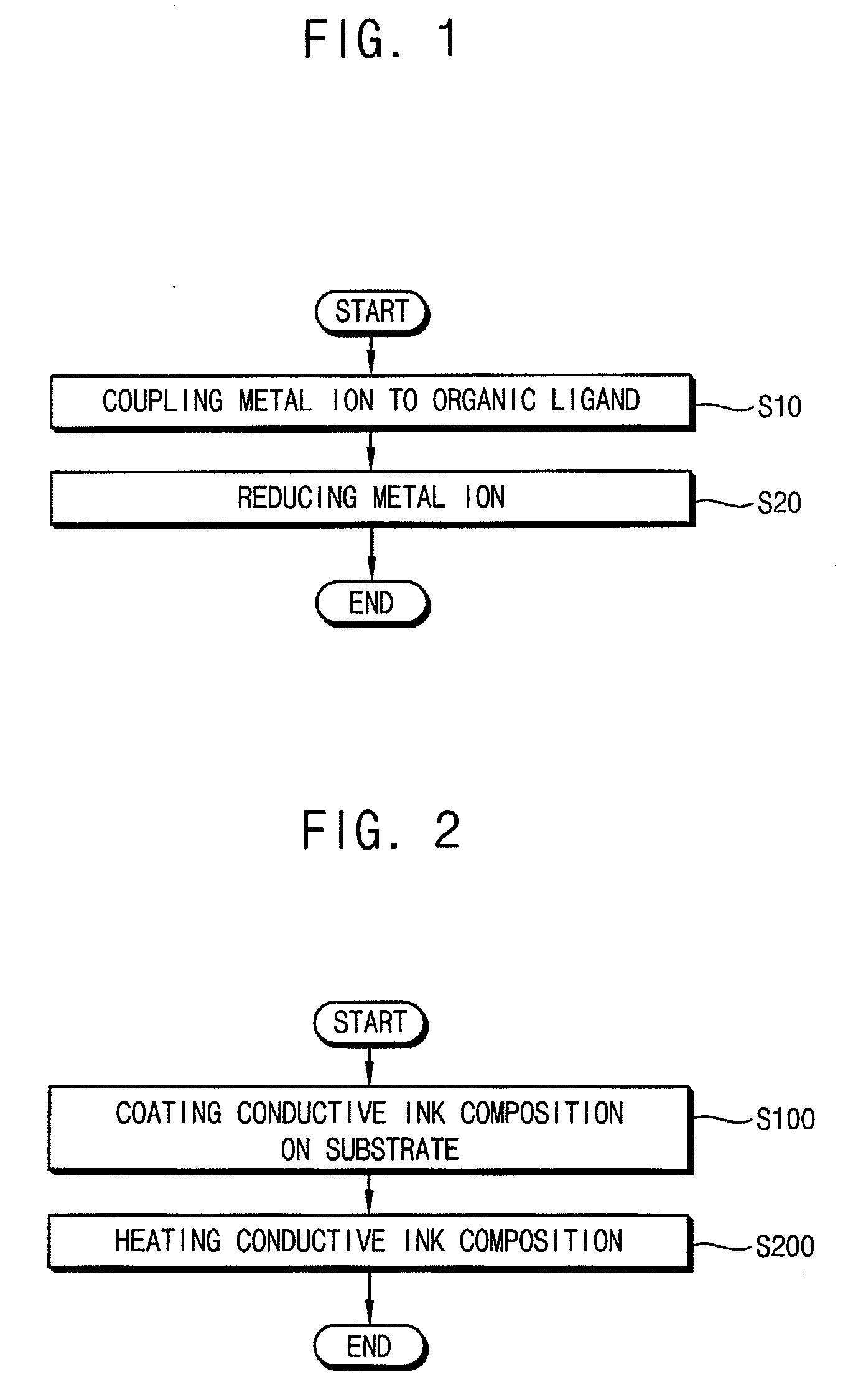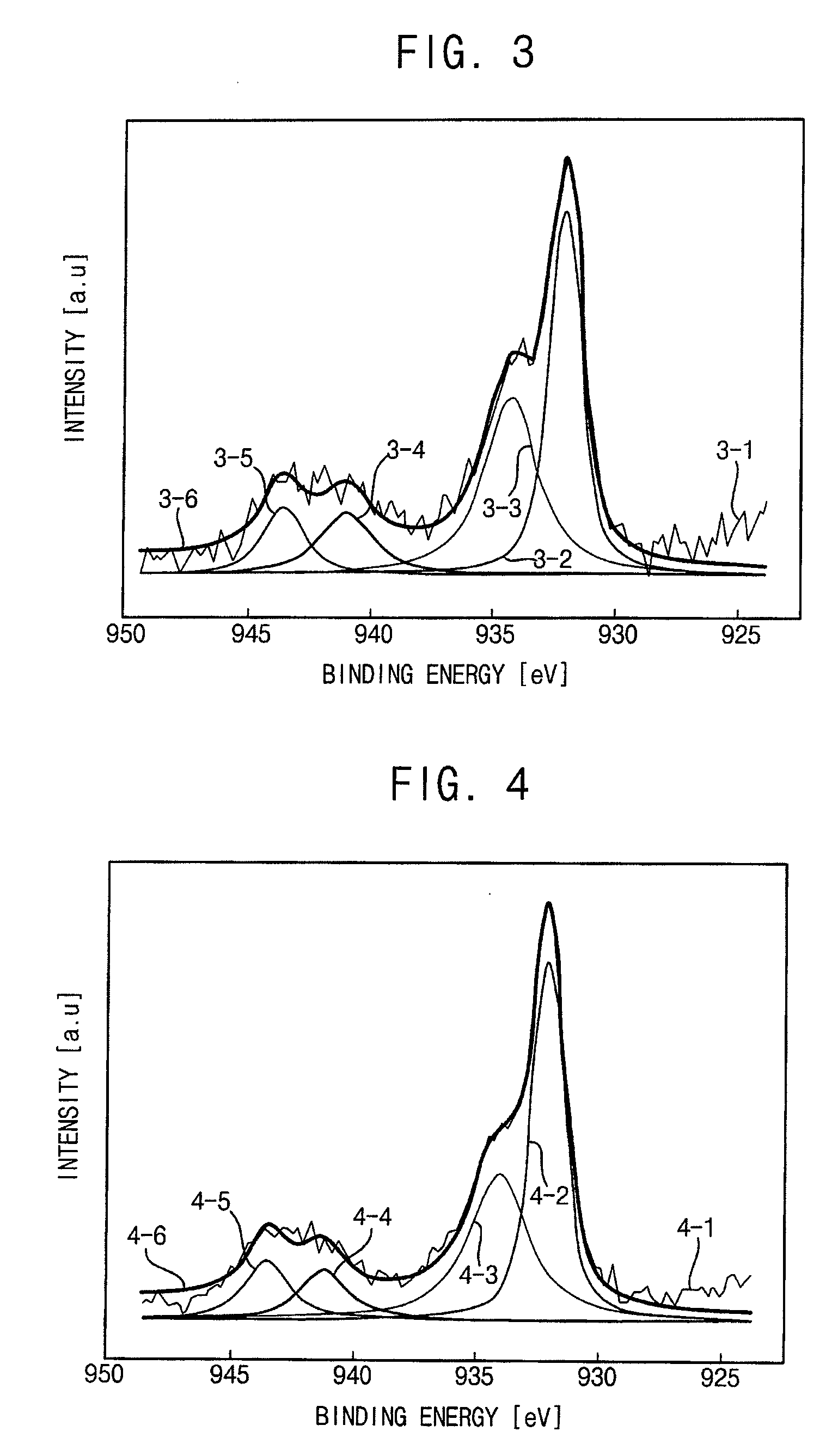Method of manufacturing a metal nanoparticle, conductive ink composition having the metal nanoparticle and method of forming a conductive pattern using the same
- Summary
- Abstract
- Description
- Claims
- Application Information
AI Technical Summary
Benefits of technology
Problems solved by technology
Method used
Image
Examples
example 1
[0089]About 16 g of polyvinyl pyrrolidone, of which a weight-average molecular weight was about 10,000, about 220 mL of diethylene glycol were mixed and stirred at a normal temperature. The mixture was provided with about 1.8587 g of sodium phosphinate monohydrate serving as a reduction agent, and then stirred at a normal temperature to prepare a solvent mixture.
[0090]About 10.1617 g of copper sulfate pentahydrate and about 30 g of pure water were mixed and stirred at a normal temperature to dissolve the copper sulfate pentahydrate in the pure water, to thereby prepare a copper salt mixture.
[0091]After the solvent mixture had been heated to about 140° C., about 4 mL of the copper salt mixture per minute was provided to the solvent mixture using an injection pump. After maintaining a reaction of the solvent mixture and the copper salt mixture for about 1 hour, the obtained particles were separated from the mixture by a centrifugal separator. The particles are cleaned two times using ...
example 2
[0092]Copper nanoparticles were prepared through substantially the same method as Example 1 except that about 16 g of polyvinyl pyrrolidone, of which a weight-average molecular weight is about 29,000, was used instead of about 16 g of polyvinyl pyrrolidone, of which a weight-average molecular weight was about 10,000.
example 3
[0093]Copper nanoparticles were prepared through substantially the same method as Example 1 except that about 16 g of polyvinyl pyrrolidone, of which a weight average molecular weight is about 40,000, was used instead of about 16 g of polyvinyl pyrrolidone, of which a weight-average molecular weight was about 10,000.
[0094]FIGS. 3, 4 and 5 are graphs respectively illustrating X-ray photoelectron spectroscopy (XPS) data of the copper nanoparticles of Examples 1, 2 and 3. Particularly, line 3-1, line 4-1 and line 5-1 respectively show raw data. Line 3-2, line 4-2 and line 5-2 respectively show peaks of a copper-copper bond. Line 3-3, line 4-3 and line 5-3 respectively show peaks of a copper-oxygen bond. Line 3-4, line 4-4 and line 5-4 are non-considered data respectively showing peaks of a copper-copper bond. Line 3-5, line 4-5 and line 5-5 respectively show non-considered data showing peaks of a copper-oxygen bond. Line 3-6, line 4-6 and line 5-6 respectively show summation data of ea...
PUM
| Property | Measurement | Unit |
|---|---|---|
| Temperature | aaaaa | aaaaa |
| Percent by mass | aaaaa | aaaaa |
| Percent by mass | aaaaa | aaaaa |
Abstract
Description
Claims
Application Information
 Login to View More
Login to View More - Generate Ideas
- Intellectual Property
- Life Sciences
- Materials
- Tech Scout
- Unparalleled Data Quality
- Higher Quality Content
- 60% Fewer Hallucinations
Browse by: Latest US Patents, China's latest patents, Technical Efficacy Thesaurus, Application Domain, Technology Topic, Popular Technical Reports.
© 2025 PatSnap. All rights reserved.Legal|Privacy policy|Modern Slavery Act Transparency Statement|Sitemap|About US| Contact US: help@patsnap.com



